-
Blueprinting Center & Methodology
- What is New Product Blueprinting?
- How is Blueprinting learned and applied?
- Blueprinting Center
- Blueprinting E-Learning Course
- How can I become Certified in New Product Blueprinting?
- How does Blueprinting fit with a stage-and-gate process?
- How does Blueprinting fit with strategic planning?
- How does Blueprinting fit with Design Thinking?
- How does Blueprinting fit with Lean Startup?
- How does Blueprinting fit with Minesweeper de-risking?
- How does Blueprinting fit with LaunchStar product launch?
- What innovation metrics should we use?
- What is "Jobs-to-be-Done?"
-
Blueprinter® Software
-
Market Segmentation (Step 1)
-
Discovery Interviews (Step 2)
- How to plan Discovery interviews
- Preparing your interview team
- Convincing customers to be interviewed
- How to handle confidential info in an interview
- How to conduct a Discovery interview
- Finding & using a digital projector for interviews
- How to conduct a customer tour
- How to debrief & follow-up a Discovery interview
- Engaging your sales colleagues in interviews
- Engaging distributors in interviews
- Interviewing customers down the value chain
- How to interview remotely with web-conferences
- How to interview at trade shows & other venues
- Interviewing in different global cultures & languages
- How to listen well during customer interviews
- How to probe during customer interviews
- How to gather economic data during interviews
- How to create & use Current State questions
- How to identify Must Haves (MH)
- How to select Top Picks (TP)
- How to use Trigger Maps
- How to form Outcome Statements
-
Preference Interviews (Step 3)
-
Rest of Blueprinting (Steps 4-7)
-
Everyday VOC
-
Minesweeper® De-risking
Tool 2.5: Gather Additional Detail with the AI-Generated "Problem Brief Report"
Use Blueprinter's AI functionality to uncover additional detail using the "Problem Brief Report"
Why do we use the Problem Brief?
When we interview customers, there's often not enough time to get all of the detail about a problem that we'd like to obtain. Thankfully, the AI-generated Problem Brief Report provides this depth.
You might use this prior to actual Discovery Interviews to better understand the depth of issues that you might hear, allowing you to be better prepared for probing. Likewise, use this after your Discovery Interviews to fill in the blanks that your customer didn't mention, or perhaps didn't even know.
How do we generate a Problem Brief?
Step 1: Select "Download Problem Brief"
Begin by opening a sticky note within the Discovery Noteboard, and select "Download Problem Brief."

Step 2: Provide inputs.
Select each of the following parameters:
Our product/offering type: The product in question will ground your analysis in your particular solution.
Customer business type: Your customer business type provides critical context.
Customer job function: Your customer's role, identity, or persona. This is the role of the person you'd like to "interview" with AI.
Customer job-to-be-done: Your customer's goal, objective, or problem to be solved. This is the topic you'd like to query AI about. It's best when written as a job statement, meaning it should begin with a verb. It should ALWAYS begin with a VERB. Gerund versions of verbs should be fine as well.
Step 3: Select "Generate Problem Brief Report"

The accompanying Problem Brief provides a General Summary and additional details for review as a PDF report.
